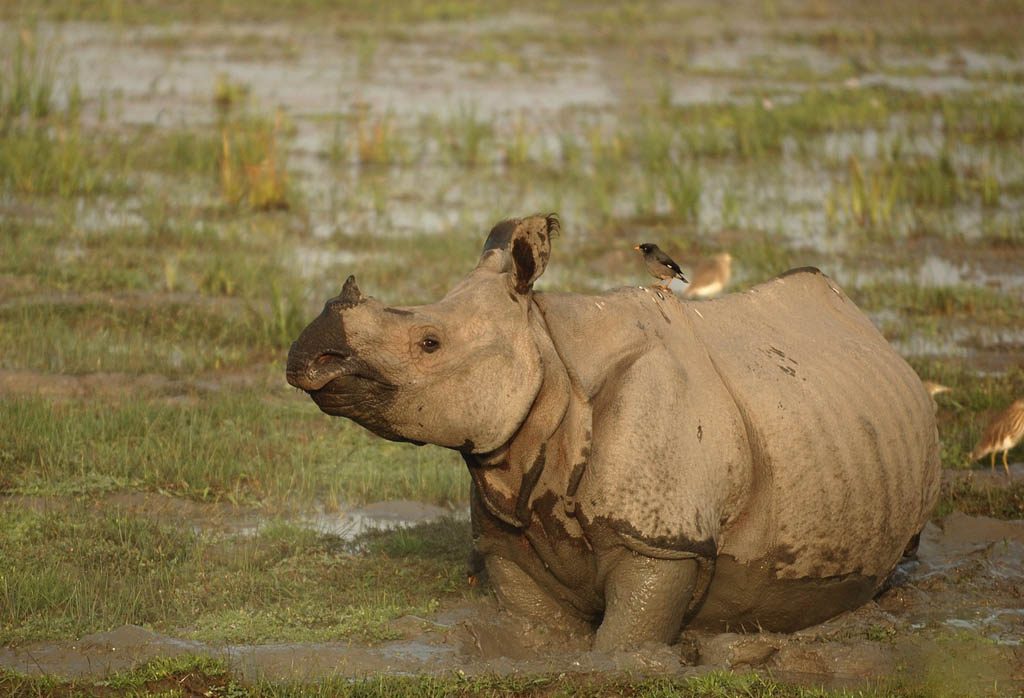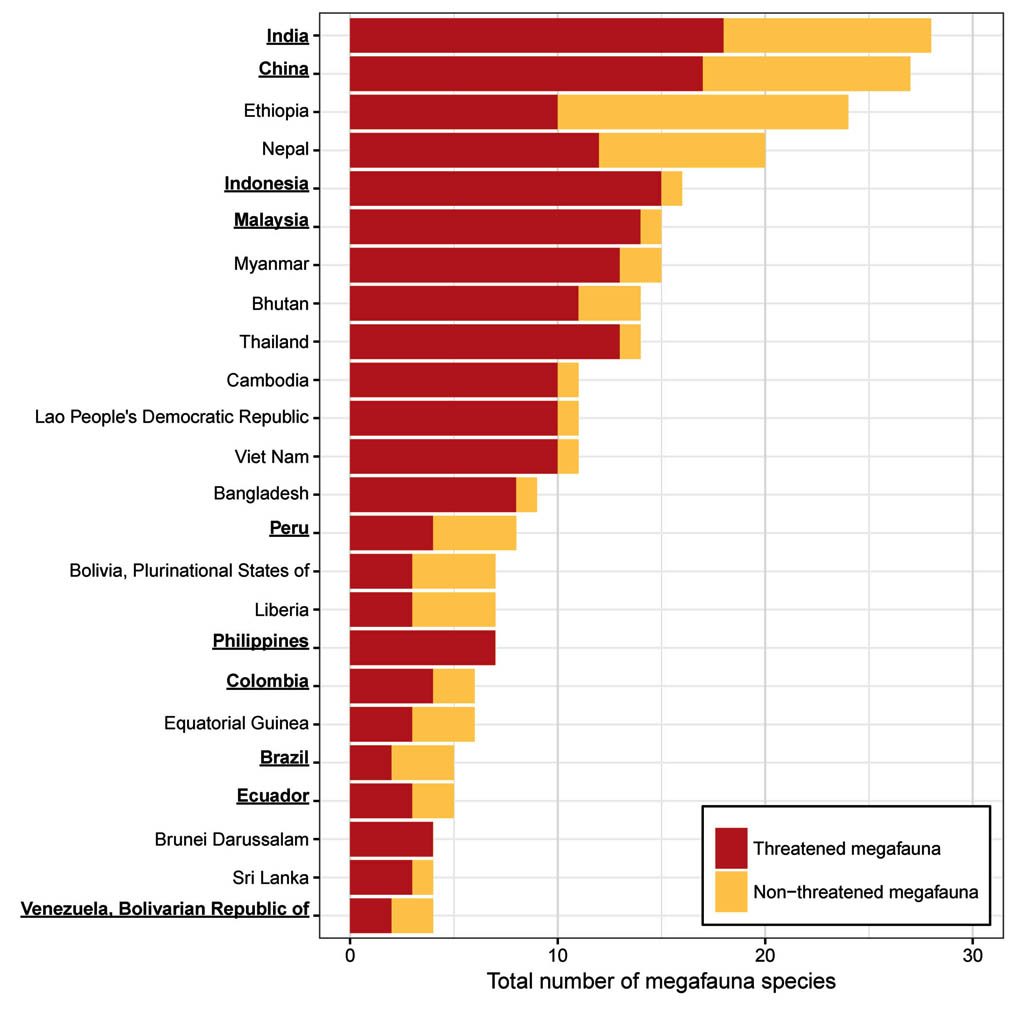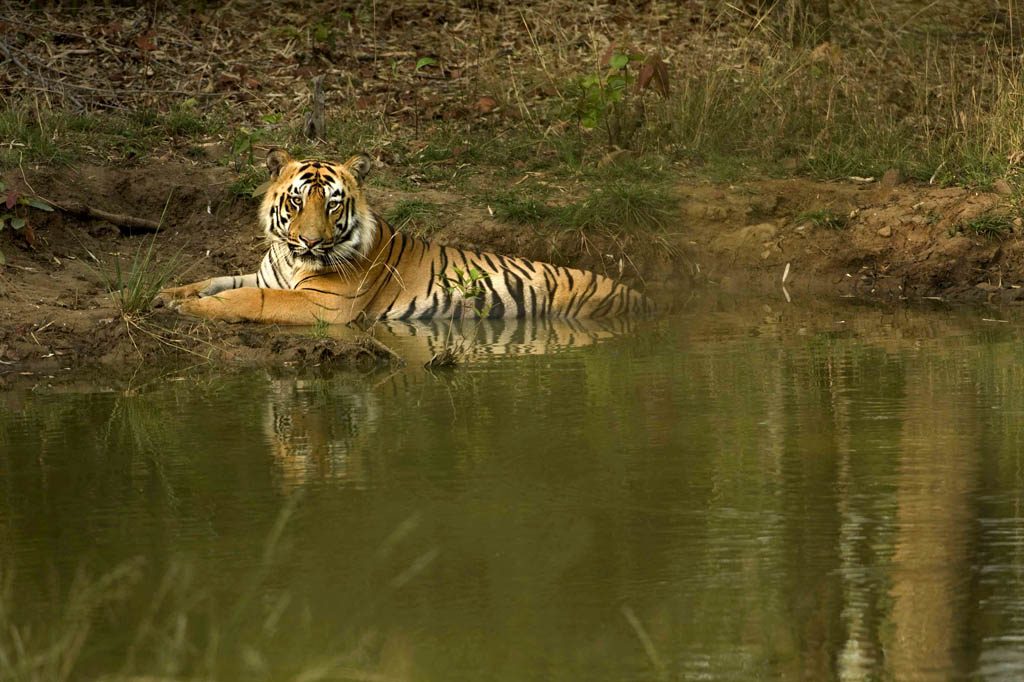Climate and Environment
Conserving the World’s Megafauna and Biodiversity: The Fierce Urgency of Now
In our recent perspective article, we noted that most (approximately 60 percent) terrestrial large carnivore and large herbivore species are now threatened with extinction, and we offered a 13-point declaration designed to promote and guide actions to save these iconic mammalian megafauna (Ripple et al. 2016). Some may worry that a focus on saving megafauna might undermine efforts to conserve biodiversity more broadly. We believe that all dimensions of biodiversity are important and that efforts to conserve megafauna are not in themselves sufficient to halt the dispiriting trends of species and population losses in recent decades. From 1970 to 2012, a recent global analysis showed a 58 percent overall decline in vertebrate population abundance (WWF 2016). Bold and varied approaches are necessary to conserve what remains of Earth’s biodiversity, and our declaration in no way disputes the value of specific conservation initiatives targeting other taxa. Indeed, the evidence is clear that without massively scaling up conservation efforts for all species, we will fail to achieve internationally agreed-upon targets for biodiversity (Tittensor et al. 2014).

However, megafauna remain strong candidates—and we believe the strongest candidates—to serve as “umbrellas” for the conservation of many species and ecosystems (Caro 2010). This is because megafauna typically have large habitat requirements relative to those of other species; therefore, conserving megafauna necessitates conserving large tracts of landscapes and the diversity of species and ecosystem processes they contain (Kerley et al. 2003b). As such, efforts to protect the world’s rapidly dwindling megafauna populations should be viewed as complementary to, not in conflict with, the conservation of other species across the taxonomic and body-size spectra.
Biodiversity is not evenly distributed on planet Earth, and some countries house far greater concentrations of biodiversity than others. Indeed, most of the world’s terrestrial species diversity can be found in the top 17 most biodiverse coun-tries (Mittermeier et al. 1997). These 17 countries support populations of at least two-thirds of all nonfish vertebrate species and three-quarters of all higher plant species (Mittermeier et al. 1997). A surprising number of threatened megafauna species are also found within these biodiversity-rich countries (figure 1), underscoring the fundamental compatibility of targeted efforts to conserve ecosystems containing both megafauna and biodiversity as a whole. Accordingly, significant co-benefits should arise from future conservation efforts in countries that are rich in both threatened megafauna and overall biodiversity in areas where the distribution of megafauna overlaps significantly with the distribution of many other species.

Abundant evidence shows that many megafauna populations are strong interactors whose loss causes direct and indirect effects on other species and ecosystem functions (Beschta and Ripple 2009, Estes et al. 2011, Dirzo et al. 2014, Ripple et al. 2014, 2015). In many instances, megafaunal extinction will cause disproportionate ecological disruption relative to the loss of other smaller animals. This is due not only to the large body size of megafauna but also to the limited functional redundancy both within megafaunal guilds (e.g., Pringle et al. 2014) and between megafauna and other animals. For example, jaguars (Panthera onca) are the primary nonhuman predators of adult tapirs (Tapirus spp.) in Latin America, only lions (Panthera leo) routinely kill African buffalo (Syncerus caller) and giraffe (Giraffa camelopardalis) across Africa, and gray wolves (Canis lupus) and bears (Ursus spp.) alone are responsible for the vast majority of predation on large herbivores in most Holarctic regions. The accumulated (and in our view unequivocal) evidence that megafauna frequently fulfill unique and far-reaching functional roles does not imply that other species should be ignored or that taxoncentric programs should supersede systems-based approaches; it simply underscores the crucial importance of not allowing relict megafaunal popula-tions to vanish. Without passing judgment on the appropriateness of conservation triage—a complicated topic beyond the scope of this article—we appreciate that funding for conservation is finite and that great care is needed when considering resource allocation. But it would be a mistake to assume that conservation funding has already peaked and that therefore allocation decisions are a zero-sum game. Our call to develop new funding mechanisms is rooted in the evidence that large animals evoke strong emotional responses in many people, providing powerful routes to develop new conservation funders and leaders (Batt 2009, Clayton and Myers 2009). We are not the first to call for additional conservation resources to achieve conservation gains. Even with increased investment, however, careful prioritization will still be necessary to inform decisions about which areas to protect and which actions to undertake for particular species (e.g., McCarthy et al. 2012). Although trade-offs are inevitable, we welcome all ethical efforts to grow the resource base for biodiversity conservation at large so that such trade-offs may be fewer and less painful. Although funding for conservation is often not easily substitutable among causes or from one conservation target to another, evidence suggests that much of the current public support for conservation might diminish if megafauna species were made less of a focus (Kerley et al. 2003a). One way to increase conservation gains is to focus on megafauna species with special public appeal, using them to create support and funding that could also help less charismatic species (Macdonald et al. 2015).
For these reasons, we believe that megafauna, with their unique socioeconomic and cultural values and their ability to harness public and political support, have the power to lift many conservation boats (Macdonald et al. 2015). For example, in Africa, several countries have set aside vast tracts of land for conservation and have a firm political commitment to preserving those lands. This is due in part to appreciation of the megafauna they contain, as well as to notions of the importance of preserving natural heritage for future generations (e.g. see the Ugandan Constitution; www.ulii.org/ node/23824). In other cases, political assistance for conservation is mostly the product of popular support. Because of their charisma, megafauna have more potential than most taxa to engender that kind of support. If we cannot muster the political will to save even the widely appreciated megafauna, then our prospects seem grim.

Our declaration was necessary because despite being among the most cherished species by the public, many megafauna populations and species are steadily sliding toward extinction. We have yet to implement mechanisms that will save these species, so our declaration highlights the urgent need to raise additional support and identify alternative approaches—especially those that integrate support to and from local communities and that consider the rights of future generations and broader society. Our rallying call is certainly not “megafauna to the exclusion of all else” but could perhaps better be framed with reference to Dr. Martin Luther King Jr.’s famous lines: “We are now faced with the fact that tomorrow is today. We are confronted with the fierce urgency of now. In this unfolding conundrum of life and history, there is such a thing as being too late. This is no time for apathy or complacency. This is a time for vigorous and positive action.”
Megafauna need immediate attention, and, yes, other species do as well. As concerned conservation scientists, we invite everyone to join the effort to confront the fierce necessity of “how?” in the fierce urgency of now.
William J. Ripple, Guillaume Chapron, Jose Vicente Lopez-Bao, Sarah M. Durant, David W. Macdonald, Peter A. Lindsey, Elizabeth L. Bennett, Robert L. Beschta, Jeremy T. Bruskotter, Ahimsa Campos-Arceiz, Richard T. Corlett, Chris T. Darimont, Amy J. Dickman, Rodolfo Dirzo, Holly T. Dublin, James A. Estes, Kristoffer T. Everatt, Mauro Galetti, Varun R. Goswami, Matt W. Hayward, Simon Hedges, Michael Hoffmann, Luke T. B. Hunter, Graham I. H. Kerley, Mike Letnic, Taal Levi, Fiona Maisels, John C. Morrison, Michael Paul Nelson, Thomas M. Newsome, Luke Painter, Robert M. Pringle, Christopher J. Sandom, John Terborgh, Adrian Treves, Blaire Van Valkenburgh, John A. Vucetich, Aaron J. Wirsing, Arian D. Wallach, Christopher Wolf, Rosie Woodroffe, Hillary Young, and Li Zhang

